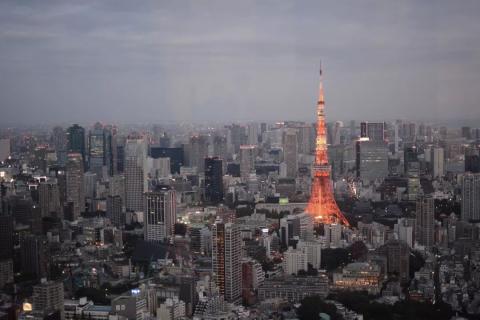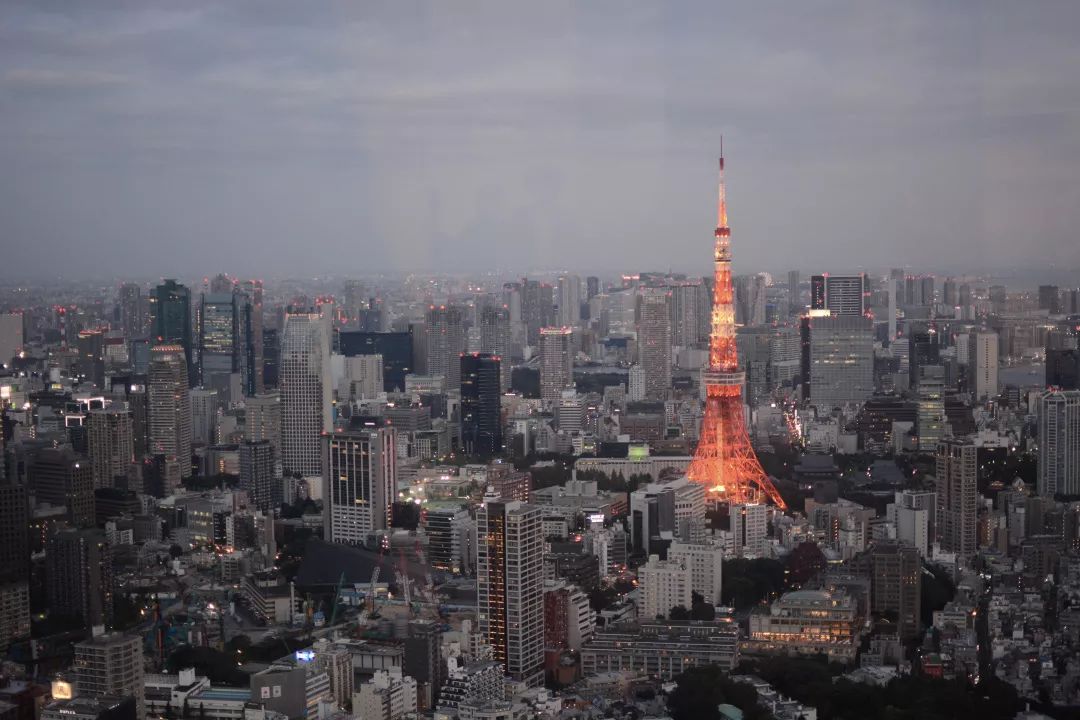

Similar iron towers show completely different postures when viewed from a distance in Paris and Tokyo. Compared with the order in Paris, Tokyo presents a "chaos" on an urban scale. Both the urban form and the intricate subway lines give people a mixed feeling. In sharp contrast, the Japanese are almost pervertedly exquisite in human-scale details. The contrast and connection between the two may be the charm of Tokyo.
Asakusa
Sensoji Temple

I stayed in the Asakusa area during my two trips to Tokyo. Life here is centered around Sensoji Temple. On the one hand, like many other neighborhoods in Japan, streets of different levels organize people's lives at various levels: various low-level businesses and weekend community activities are connected by streets, especially the commercial street in front of Sensoji Temple. It was crowded. On the other hand, the public area with Sensoji Temple as the core is not only a tourist area, but also a main place for citizen activities.
Due to financial constraints, I stayed in a capsule hotel for the second time. Generally speaking, capsule hotels only provide a place to sleep and wash, so some other daily needs are extended to the community to complete. For example, for the problem of washing clothes, we found a 24-hour self-service laundromat nearby to solve the problem, and unexpectedly discovered that next door was a soup house for local residents. An uncle threw a small cart of clothes into the washing machine and then went to the bath next door. In addition to tourists from all over the world, capsule hotels also have office workers with no fixed abode. They get up early every morning to take a shower and then put on their suits and go out. This approach of compressing the living space to the limit is probably also Only the Japanese could endure it for a long time.



street life


Interweaving of past and present
Shang Ye Park
National Museum of Western Art, Horyuji Treasure Museum, Tokyo Metropolitan Art Museum, Shopping Street under the Viaduct

As a park in the urban sense of Tokyo, Ueno Park is home to large and small art museums, science and technology museums, zoos, shrines, etc. I remember that when I went to Tokyo for the first time, I arrived too early and couldn’t check into the hotel yet, so I spent a long time sunbathing by the fountain square in Ueno Park. I saw many families bringing the elderly and children here to relax, watch exhibitions or participate in some public activities. The second time I saw an elderly band performing in the rain. While providing various public services to the city, Ueno Park is also an important transportation node (the interchange station for the Ginza Line and JR Line). The large flow of people has invigorated the area with catering, drugstores, clothing and other commercial activities gathered under the railway viaduct. The continuous shops stretch for several kilometers all the way to Akihabara. This area also has a lot of delicious food. At least the ramen, eel rice, and roasted birds I have tasted were pretty good.
In addition to food, one of the main purposes of coming to Ueno Park is to visit the houses and see the exhibitions. Le Corbusier’s National Museum of Western Art and Yoshio Taniguchi’s Horyuji Treasure Museum are both here. Kunio Maekawa's Tokyo Metropolitan Art Museum is also worth a visit. When we went there, we happened to catch up with the special exhibition of Impressionism. The underground entrance and foyer space always give me the feeling of being transformed into a subway station, which is quite magical.



National Museum of Western Art



Horyuji Temple Treasure Museum

Tokyo Metropolitan Art Museum

Commercial street under the viaduct
Ginza Shibuya Shinjuku Omotesando Daikanyama
Shibuya Light of the Future Meiji Jingu Shrine Yoyogi Stadium Harajuku Nezu Museum of Art
Ginza, Shibuya, Shinjuku, Omotesando and Daikanyama are all famous business districts. From my experience, the shops in Ginza, Omotesando and Daikanyama tend to be arranged linearly around the streets, while Shibuya and Shinjuku are more organized around subway stations. It is a core point diffusion. This is specifically reflected in the large number of brand stores concentrated along Ginza, Omotesando and Daikanyama, while the areas around Shibuya and Shinjuku are dominated by large shopping malls. Among them, Omotesando is the road leading to the Meiji Shrine. It has attracted major luxury brands to open flagship stores here and invited world-renowned architects to design. As an area with clear urban design, Daikanyama also invited many famous Japanese architects to design individual buildings. As far as I'm concerned, the previous urban design didn't seem to have had much of an effect, with most people concentrated in the small group area of Tsutaya Bookstore consisting of several discrete units. In addition, these areas are also dotted with some businesses formed in residential areas, which Yuharu Tsukamoto calls "commersidence", such as Harajuku, Minami Aoyama and other areas, which are basically gathering places for Japanese street culture. There are many Trendy brands and boutiques.
As far as architecture is concerned, except for the Prada Omotesando store and the Hermes Ginza store, which were coerced into entering, no other brand flagship stores dared to enter. Although I don’t know what H&D’s intentions are, the cave-like entrance and the fitting room on the mezzanine floor are quite magical. I went into Hermes entirely because of Yzy’s mysterious love for glass bricks. Meiji Jingu Shrine feels like a big park. Japanese people will bow at the big torii gate when they come in and out. It was a pity that I didn’t make it to Yoyogi Stadium twice. The Nezu Museum of Art was closed when I went there for the first time. Only after I went there for the second time did I realize that there was a garden behind it. Several complexes around Shibuya Station have taken advantage of the flow of people brought by traffic in some way, and there is a free and open observation deck on the upper floor of the Light of the Future.
Although it is a commercial area, I barely bought anything after going there twice, but there are quite a lot of delicious food. It is said that there are many delicious sushi restaurants in the Ginza area. We went to Midori Sushi and waited in line for nearly two hours. There is an Ochazuke restaurant in the shopping mall next to the square coming out of Shinjuku Subway Station, and it feels delicious. In addition, there is a conveyor belt sushi chain over Omotesando, which is said to be cheap and delicious.


Ginza


Shibuya


Omotesando


Nezu Museum of Art
Roppongi
Roppongi Hills National Museum of Art Tokyo Tower
The Roppongi area is also a concentrated CBD area. Since we walked there in the evening, we clearly felt that the closer to the central area, the more popular the shops. In Roppongi Hills, the buildings are connected through a two-story platform. There are side corridors on the edge of the platform for shelter from the rain, but it is still not enough to solve the wind environment problems caused by the high-rise buildings. The wind is strong and cold. In addition, the underground floor seems to be designed a bit confusingly, with no clear connections established using public spaces and dead ends in several places. There is a semi-outdoor underground courtyard surrounded by several popular restaurants, but it has only one entrance. There is a fee for the Roppongi observation deck. Compared with the free observation deck of Shibuya Mirai Light, the city scenery you can see is better. There are many people going up before sunset, and you may have to queue for a certain period of time.
The National New Museum of Art designed by Kisho Kurokawa is also nearby. When I first saw the facade, I felt a little confused. As soon as I entered the atrium, I was surprised by the indoor light and shadow affected by the facade and the rounded cone-shaped services. The spaces complement each other. The public reading room not only has a large collection of books, but the reading space is also well designed. When people sit down, their line of sight is just at the same level as the lawn in the outdoor courtyard. When you look down tiredly and look up, you can see the grass swaying in the wind. In addition, the museum has also specially designed a secondary entrance square connected to the subway station, which is really accessible for everything.


Tokyo City View




National Museum of Fine Arts

Tokyo Tower
To be continued…
